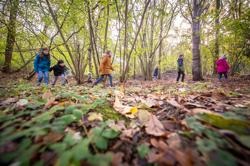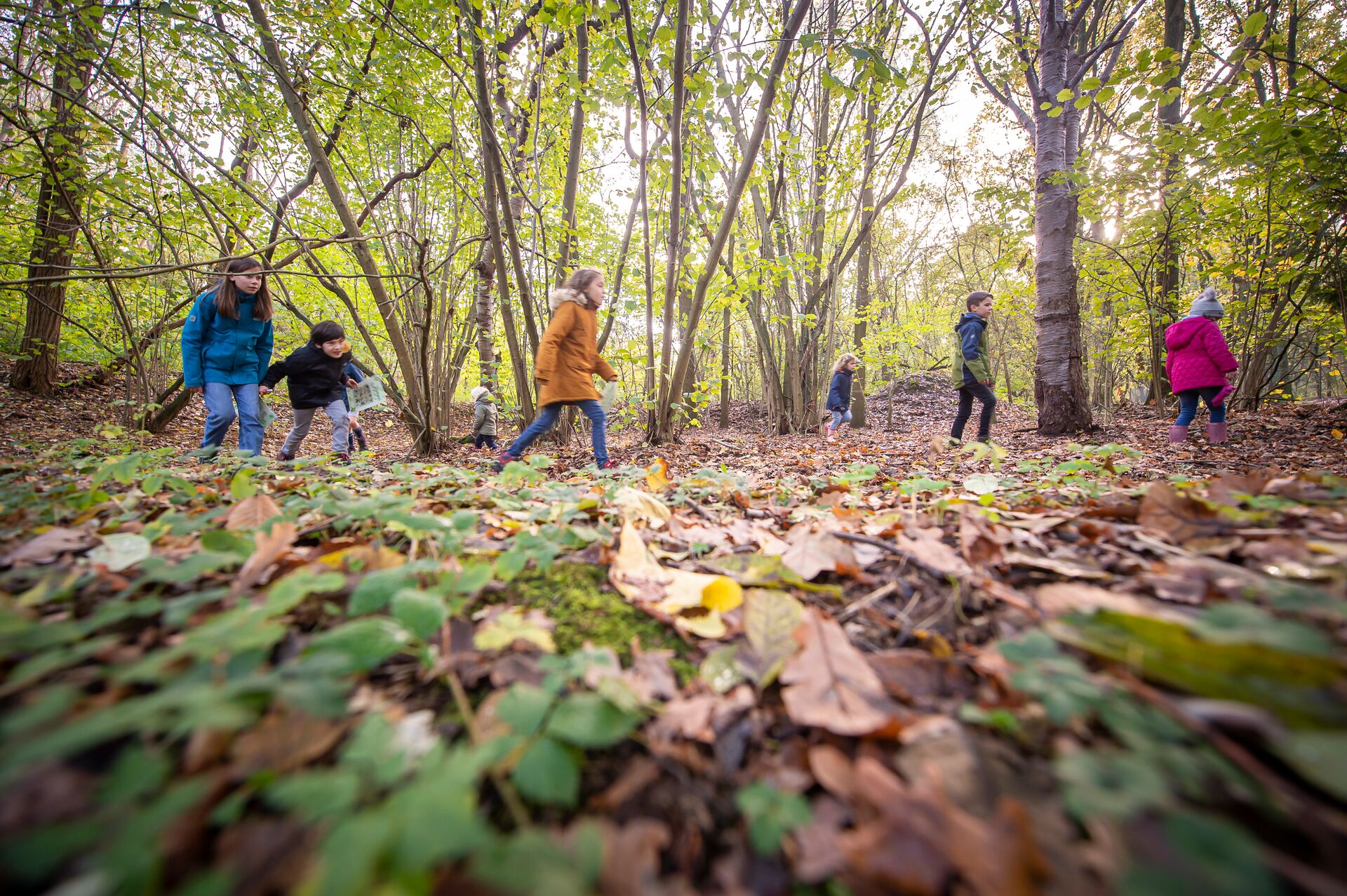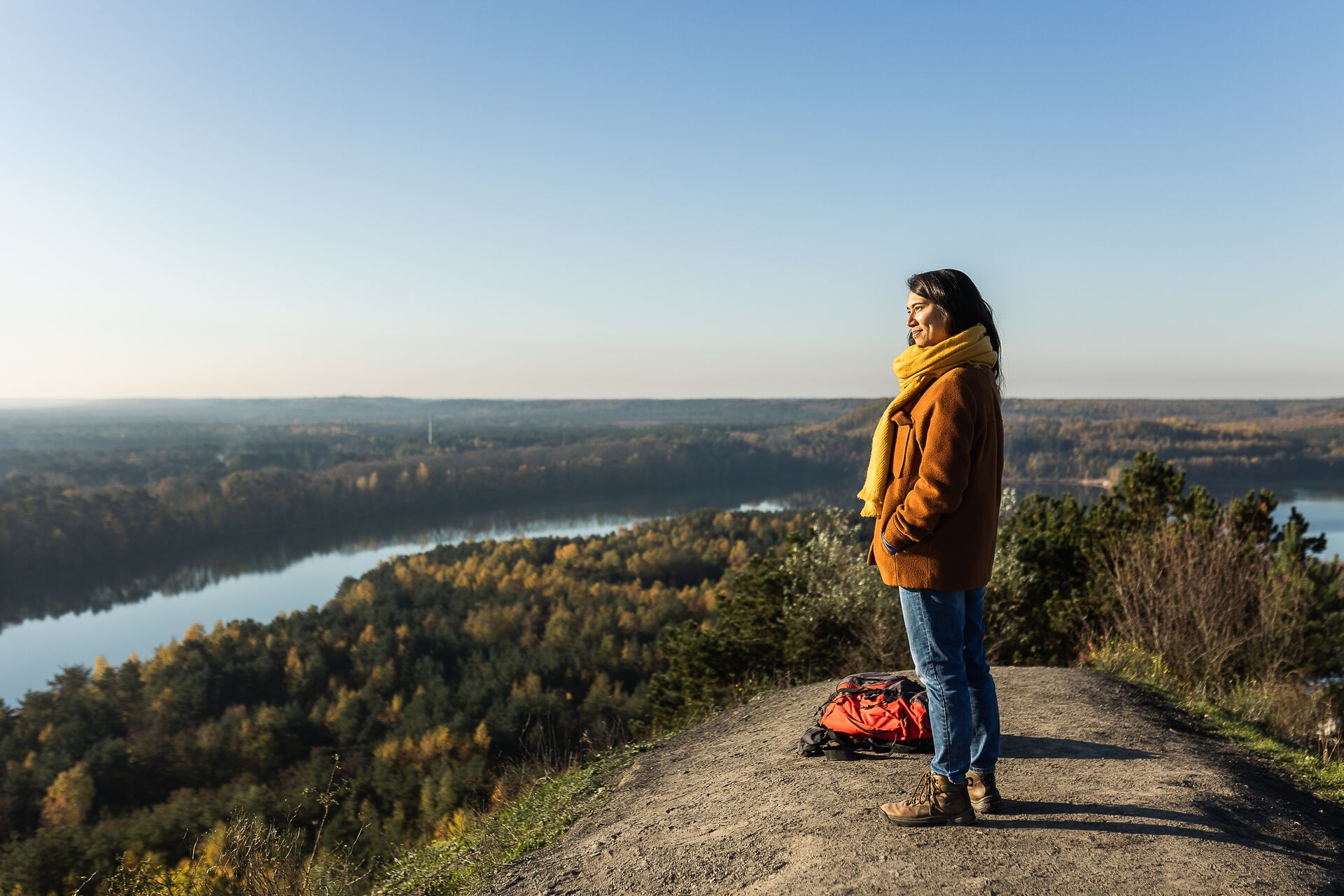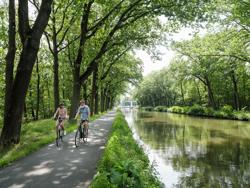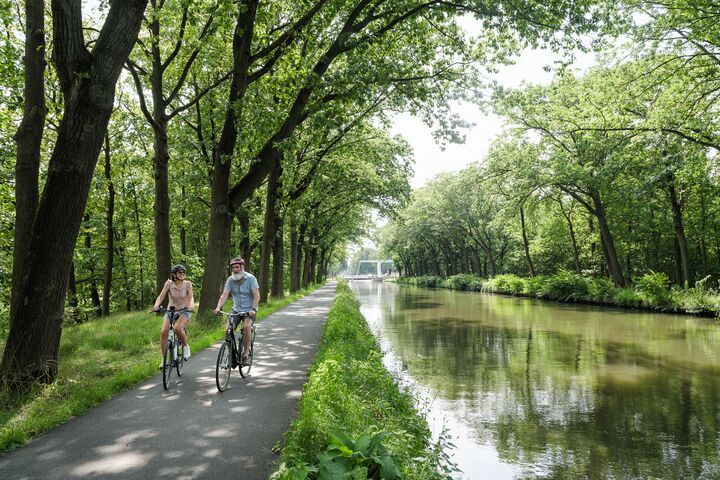What's the best way to discover Limburg? By seeing as much of it as possible. That's why we're not just staying in one place for this three-day trip. We'll explore this amazing place from three different bases. We start in Genk, famous for its mining past. After that we'll explore provincial capital Hasselt. On the final day, we'll explore the fruit-growing region of Haspengouw, starting in historic Sint-Truiden.
Day 1
An expedition through former mine tunnels
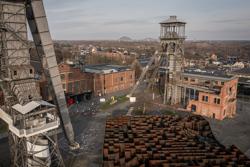
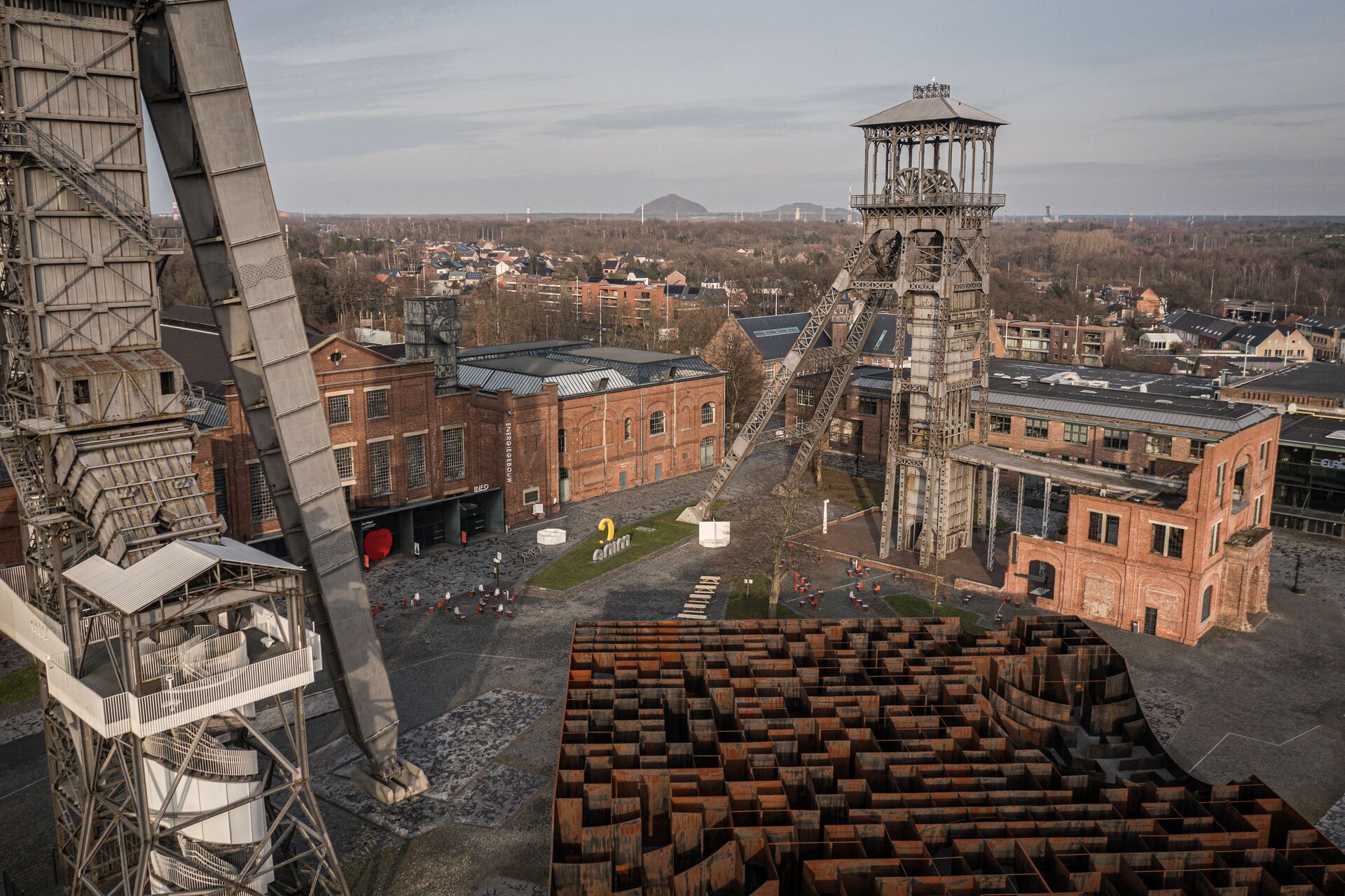
Our three-day trip kicks off in Genk, at C-Mine. This place perfectly encapsulates the past and present of this region. The vibrant centre of art, culture and heritage is located on the former Winterslag coal site. Until 40 years ago, this was one of many active mines in this region. The remnants of that past are still tangible at the site. The two imposing mine pitheads still tower over the area.
These industrial monuments spark our curiosity. The interactive C-Mine Expedition immerses us in the region's mining past. On this adventurous journey through the former mine tunnels, we listen to true stories illustrated by animations, holograms, unique decors and special effects. There's another (literal) high point at the end of the expedition. We climb a more than 60-metre-high pithead. At the top, we are rewarded with a beautiful panorama of the Limburg greenery.
Hoge Kempen National Park by bike
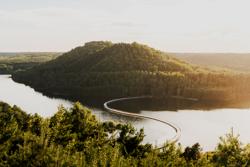
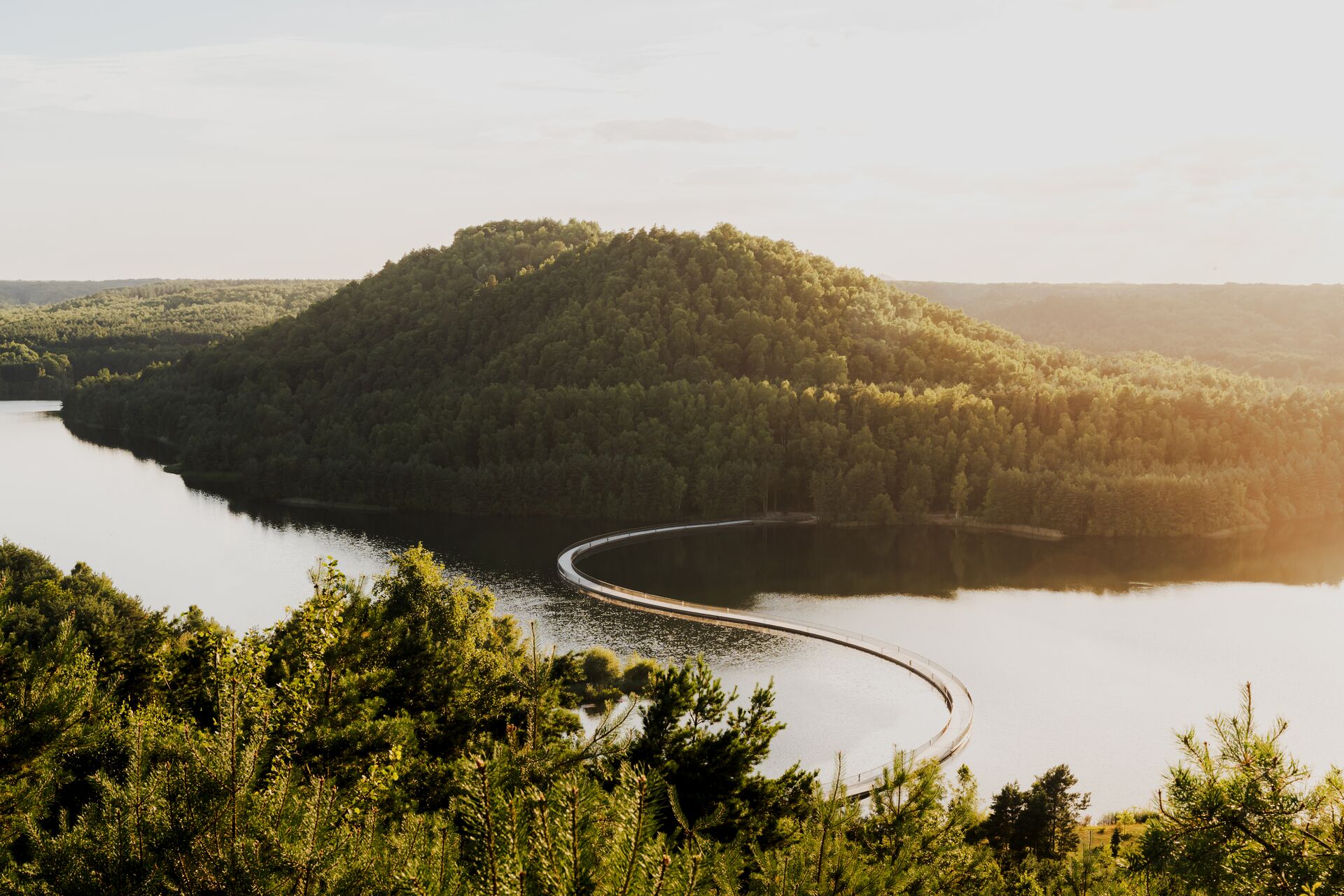
We are itching to explore that vast landscape. So we hop in the saddle and go Cycling through water and cycling through the heathland. Our bike ride takes us through greenery, past art and heritage, through water (yes, you read that right!), heathland and a vast national park. Cycling paradise Limburg was kind enough to have our rental e-bikes ready for us at C-Mine. So our cycling adventure starts right away.
After barely two minutes, we find ourselves on a quiet road flanked by lofty trees. This is our first taste of the Hoge Kempen National Park. Part of our route leads through this beautiful natural park. From vast pine forests to purple-blossoming heathland, from shifting dunes and broad lakes to high dune peaks. This National Park treats you to an impressive 12,000 hectares of unspoilt nature.
Across the heathland
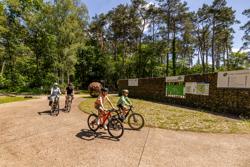
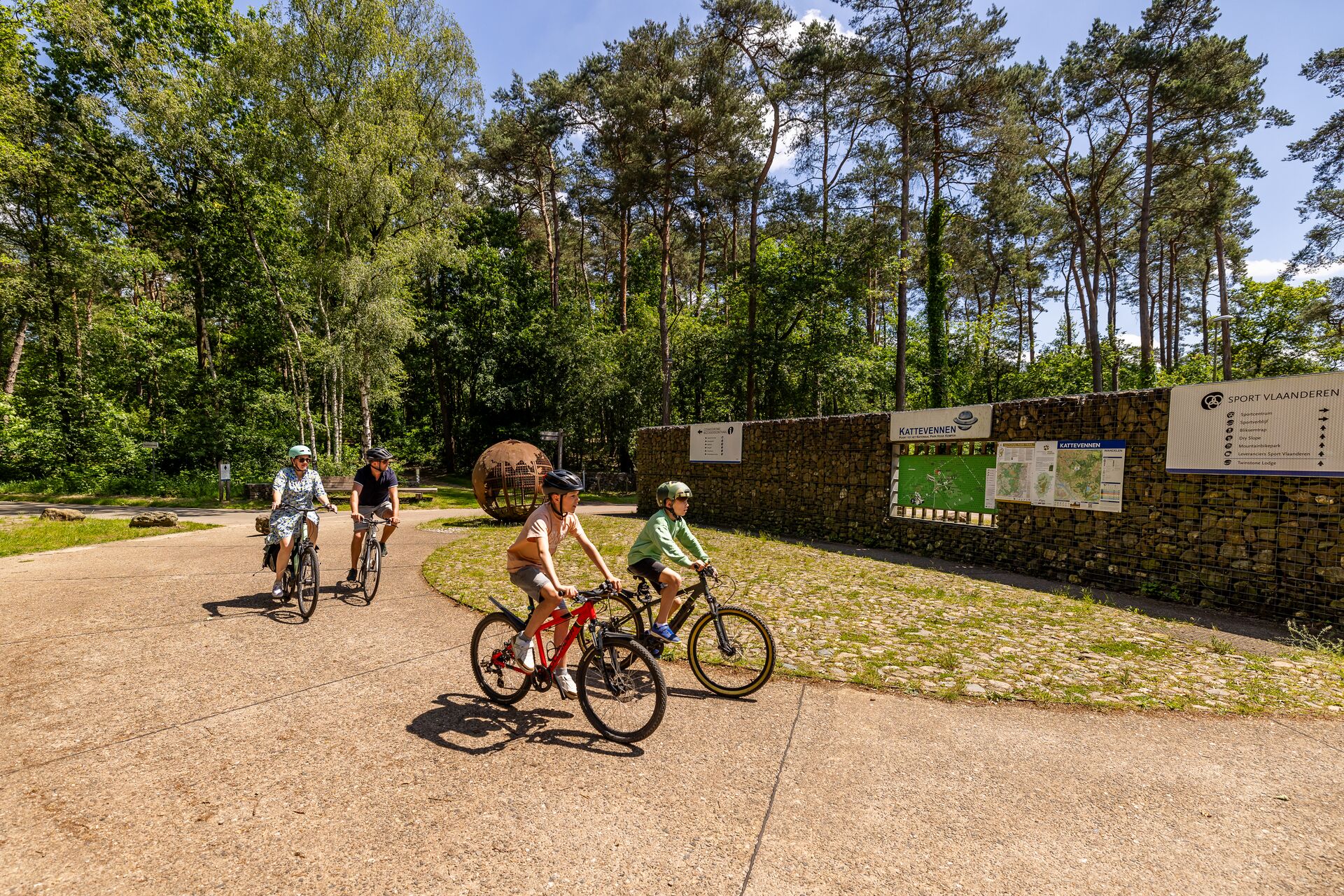
We ride into this natural paradise along the Kattevennen. This is one of the nine gateways to the National Park. From here, we discover a number of unique attractions. We first glimpse the Cosmodrome planetarium, and right after that we ride past the bike park. Here you'll see daredevils on BMXs and mountain bikes showing off their skills. A little further on, we stop at the Bliksemtrap. Here we are treated to a magnificent panorama of the surrounding area.
We continue our ride, toward a new high point: Cycling through the Heathland. First, an impressive wooden cycle bridge takes us into higher spheres. We end up cycling high above the ground. It's a unique experience. Right after that, we dive into nature: we ride right through the Mechelse Heide for kilometres on end.
LABIOMISTA, an artistic universe
From the Mechelse Heide we continue our route to Thor Park, one of the other gateways to the National Park. Here we ride under an old pithead, another reminder of Limburg's mining history. We move swiftly from the past into the present. A ton of contemporary art awaits us. We park our bikes at the utterly unique LABIOMISTA.
This is the name of artist Koen Vanmechelen’s fascinating universe. He builds his universe on the intersections of art, identity, fertility and biocultural diversity. This site, with space for animals and art, wilderness and wonder, is an ode to creativity and discovery. We stroll its 60-acre park through an exciting open-air exhibition. We see a beautiful but alienating monkey with an owl’s head. There’s a gold-painted tree that immediately attracts attention. We meet the animals: some alpacas, emus and dromedaries. The life-size bronze sculpture of a vulture on a huge human hand is one of the highlights.
Cycling through water
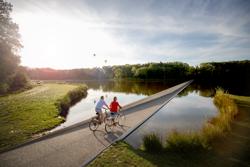
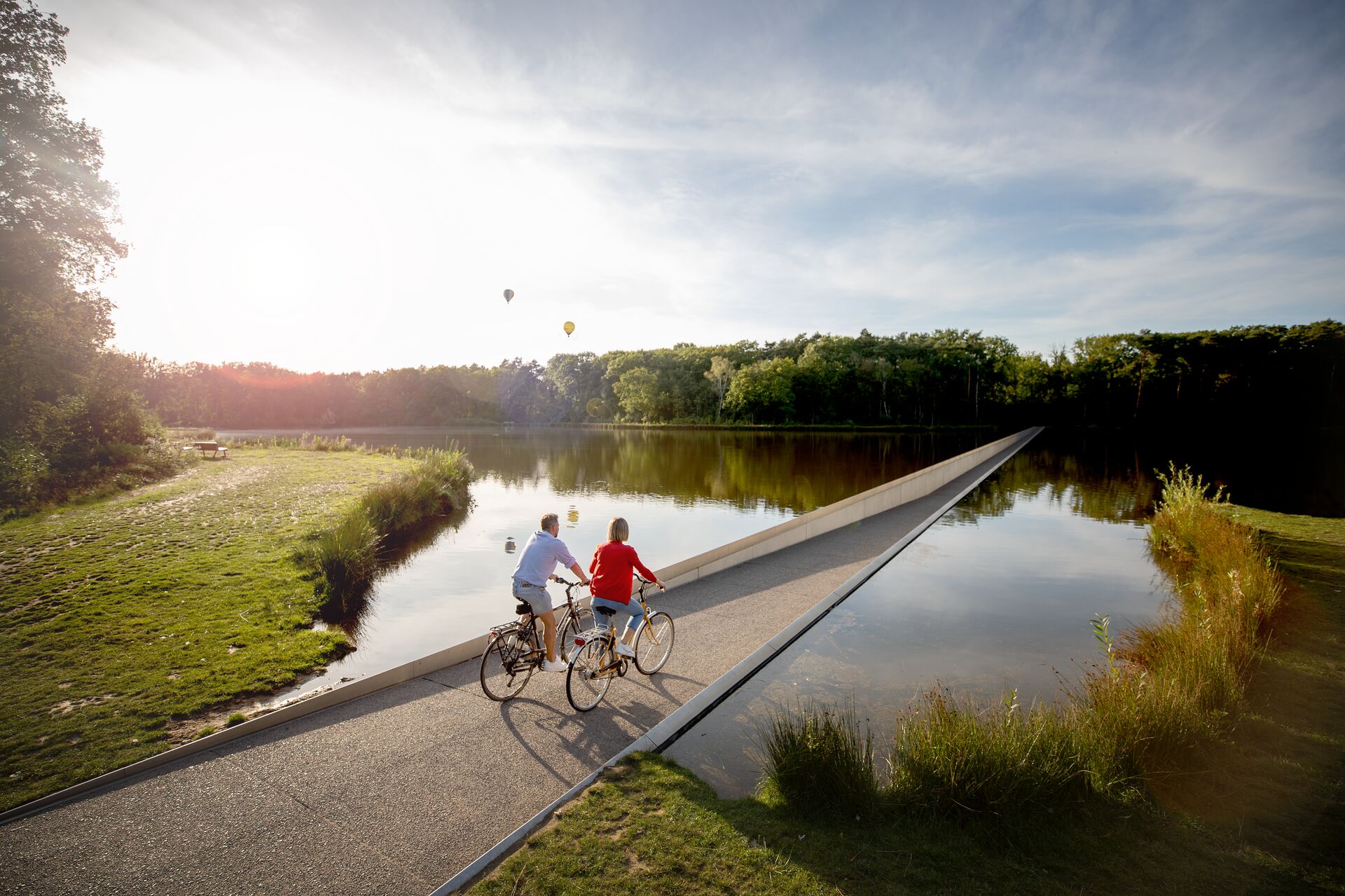
Our fascinating visit still reverberates as we continue our bike ride. Yet another adventure is just around the corner: Cycling through Water. A cycling path leads us straight through a broad lake. The path seems to keep descending, until the water is at eye level. We seem to be cleaving right through the water. And all without getting wet.
After this unique experience, we push on to today's final stop: Bokrijk. This open-air museum tells the story of daily life in days gone by. After this little trip back in time, we're back where we started: C-Mine. We hand back our trusty rental bikes.
After a short rest - made all the more pleasant with a Belgian beer - we explore the site again. Our walk takes us through a sculpture maze, and into Studio Pieter Stockmans. Here we find out all about this artisan and experimental porcelain artist. Our jam-packed first day in Limburg thus comes to an end. We set off for the heart of Genk. As evening falls, we are already thinking about tomorrow: a new day full of adventure!
(Note to avid cyclists: Limburg has a lot to offer, much more than shown on this route. For example, Cycling between Terrils really brings the mining past to life. And Visit Limburg will be happy to help you on your way to even more cycling pleasure).
Day 2
A new day, a new base. Today our Limburg adventure continues in Hasselt. The provincial capital has a rich history. We find out a bit more about it on a city walk. We don't need to work out a route, they're already marked on the ground. Paving stones topped with a large hazelnut, this city's unofficial mascot, guide the way.
Strolling through the historic centre
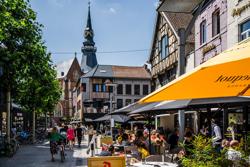
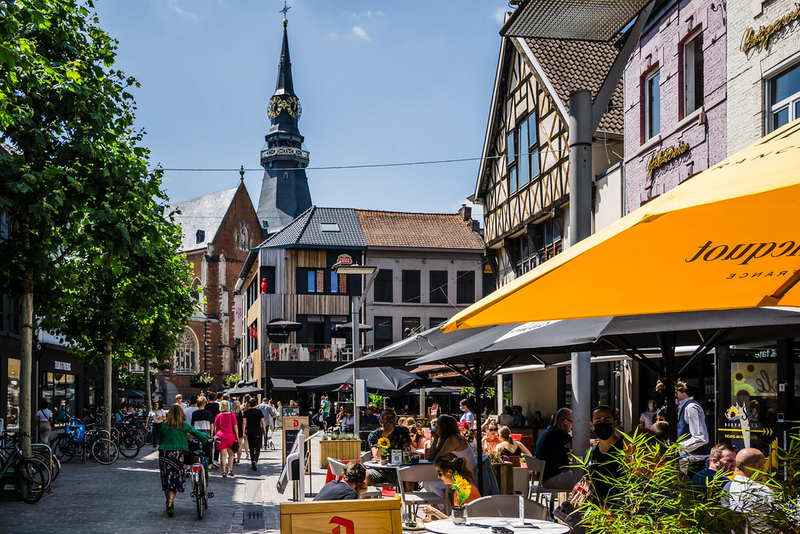
Our walk starts at the Grote Markt, which traces its history back to the year 1300. Today there is a wonderful mix of historic and contemporary architecture here. A little further on we come across the majestic Virga Jesse Basilica. Inside we find the Virga Jesse statue, dating from the 14th century. This statue has an important place in Hasselt's folklore.
Every seven years, the people of Hasselt carry this statue through the streets of the city. Besides this cultural icon, you can also admire outstanding tapestries, a baroque high altar and the tombs of two abbesses of Herkenrode Abbey here. We'll learn more about this Abbey later.
Through the unimposing bricks of the Minderbroeders Church, the tour leads to the Oud Gasthuis. The attractively restored facades recall the hospital that used to stand here. Right after that, we step into the old beguinage. A small community of celibate, religious women lived here back days gone by: the Beguines. Today this place is still a verdant oasis, full of historic buildings. Although there is still room for modernity: an imposing and ultramodern building houses arts centre Z33.
But we'll come back to that later. First let's continue our tour. Via the Fashion Museum and the Jenever Museum, two gems in Hasselt's crown, we reach the end point of our walk: St. Quintinus Cathedral. This 11th-century edifice and its surrounding square form the historic heart of the city. Today it is still a lovely place to take a break in the centre of Hasselt.
Discover contemporary art in an old part of town
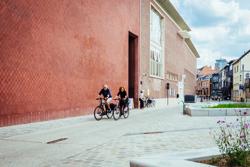
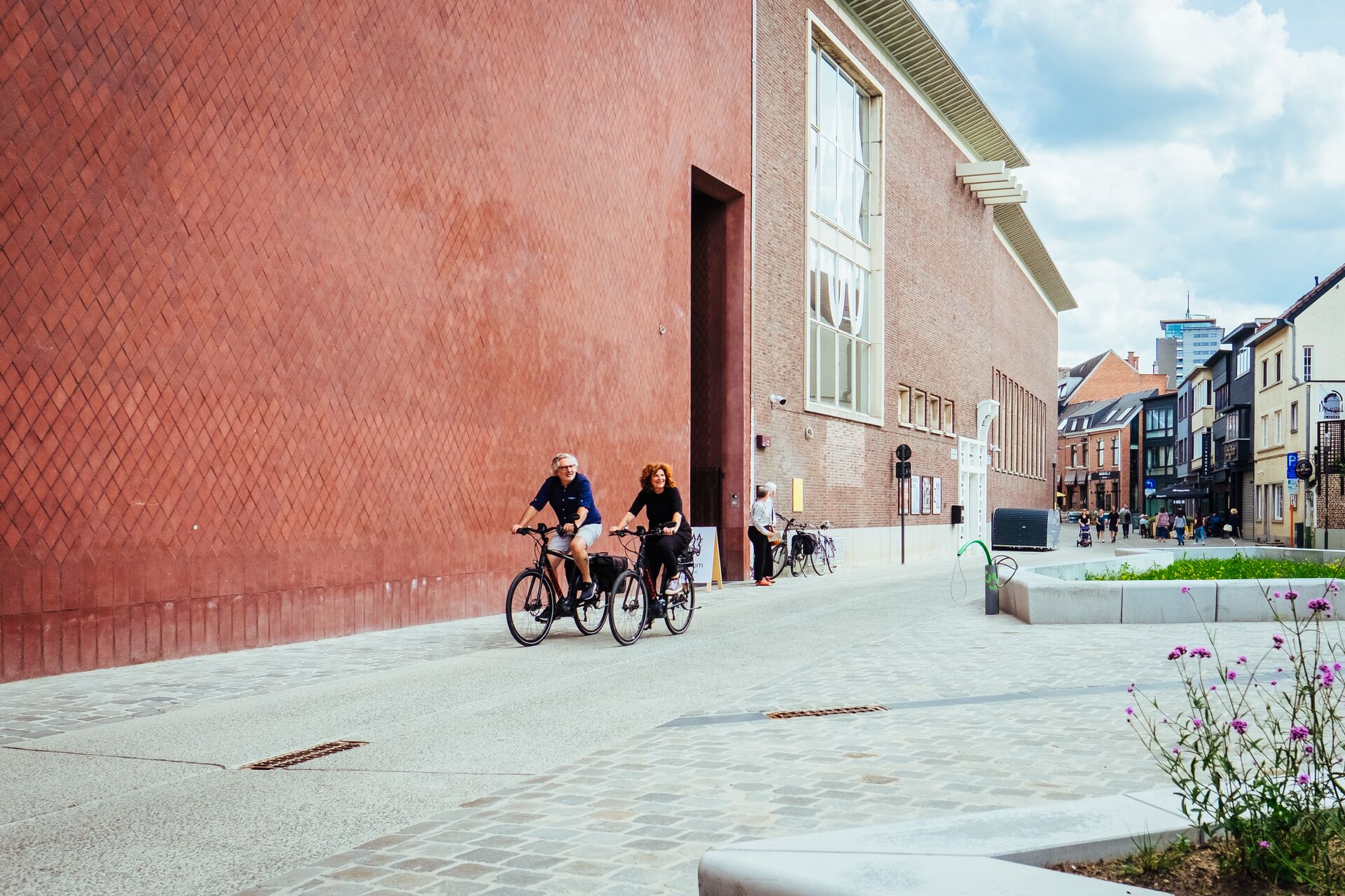
After a short rest, we retrace our steps to that modern building in the beguinage. Since 2020, this has been the home of Z33, a dazzling arts centre. Behind its unusual diamond-shaped brick exterior, you'll discover exhibitions, research and other projects in connection with contemporary art, design and architecture. It's wonderful here to lose yourself in a surprising and stimulating environment. After this artistic detour, it's time for a short rest. We choose from one of the many fine restaurants in the heart of the city and we can now recharge our batteries for the next leg.
Stroll through the Far East in the Japanese garden
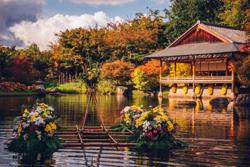
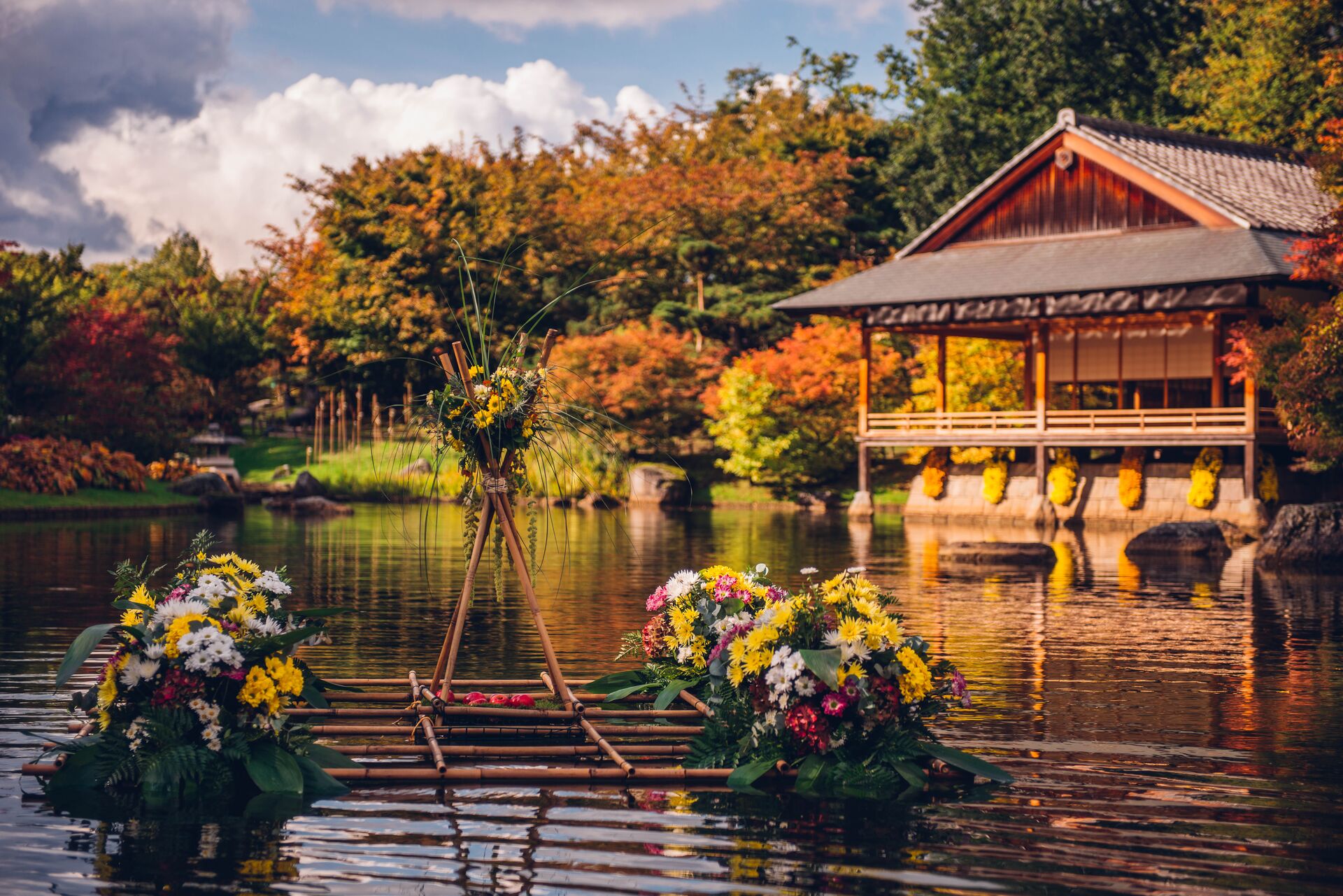
After a well-deserved break, we gradually head out of the centre of Hasselt. Via the bustling Kapermolen Park, we arrive at the Japanese Garden. This oasis of tranquillity is Europe's largest authentic Japanese garden. It was laid as a symbol of the bonds of friendship between Hasselt and the Japanese city of Itami, north of Osaka.
This spot takes you on a bit of Far East reverie for a while. You enter the park through a traditional entrance gate ('Torii'), go past unusual altars and a ceremony house made of natural materials. The various Japanese cherry trees with their breathtaking blossoms, water features, zigzag bridges, the waterfall and rock formations complete the picture.
Breathe history at Herkenrode Abbey
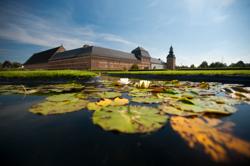
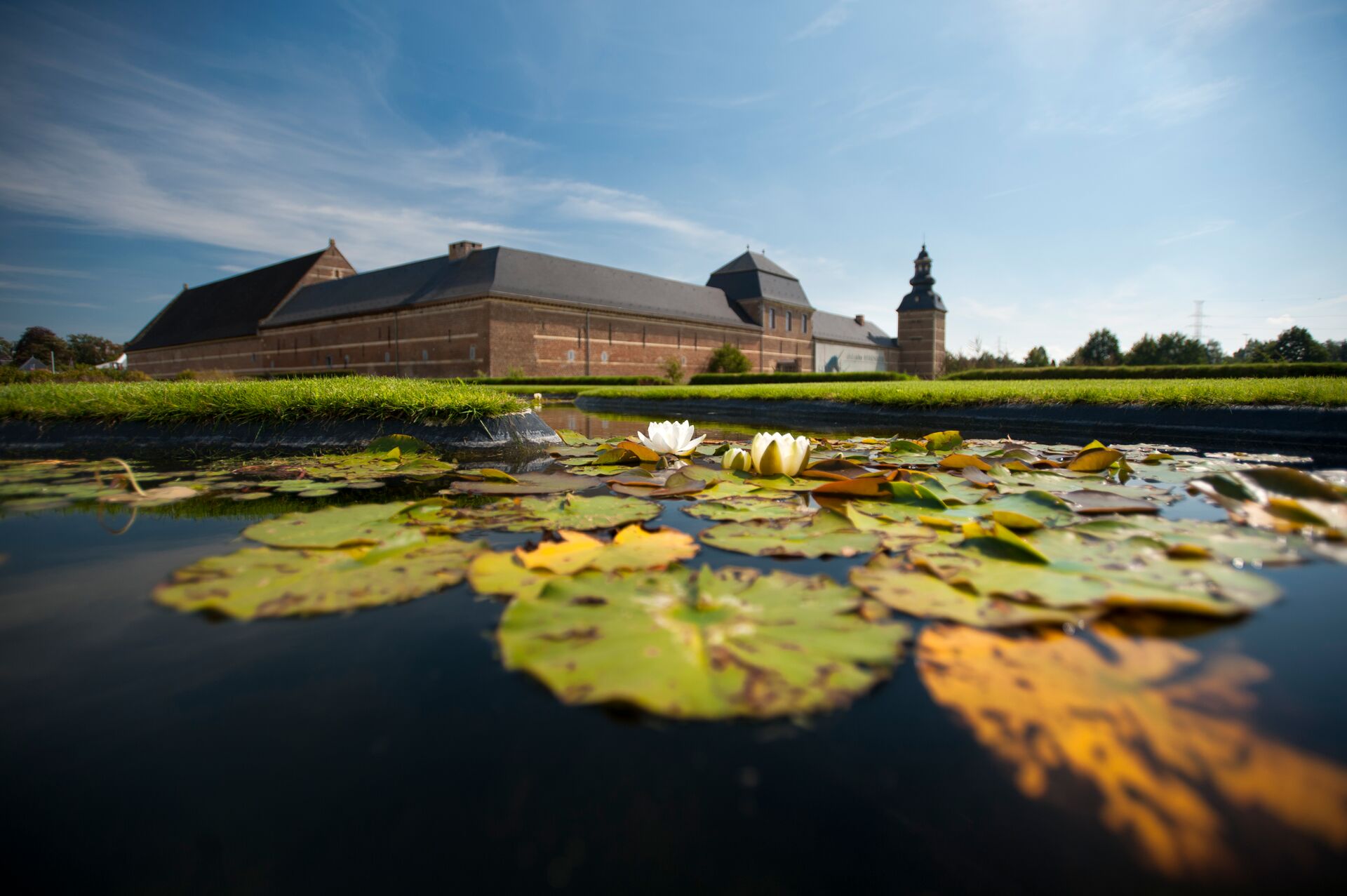
After an introduction to a different culture, we make our way back to the centre. We continue to Hasselt train station. Here we take the bus to a different kind of heritage gem: Herkenrode Abbey. This unique spot exudes history. The abbey was founded as far back as the 13th century. It was once the richest women's abbey in the Low Countries. For centuries, it was a safe place for enterprising, religious women.
The abbey was built by Cistercian nuns, who themselves were veritable entrepreneurs. It became a hotspot for pilgrims and was an economic powerhouse, thanks to the surrounding lands. The Experience centre does full justice to the impressive history of these extraordinary women. We learn about opulence and splendour, but also about the hard times of war, disease and violence.
Relax in De Wijers, land of 1001 ponds
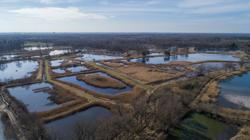
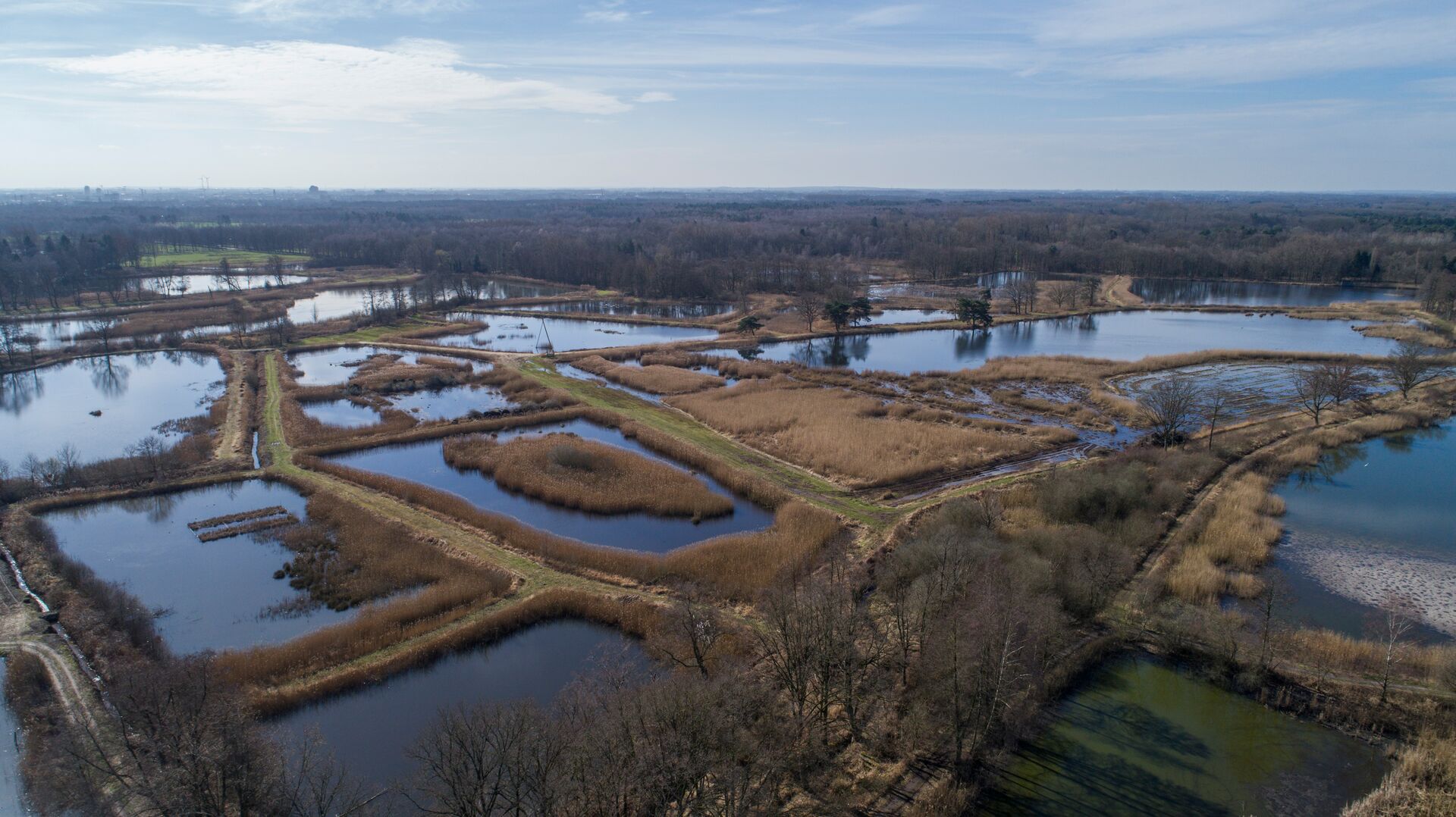
After this historical rollercoaster, it's time for a dose of relaxation in some greenery: we head out into nature. In fact, Herkenrode Abbey serves as the gateway to De Wijers. This nature area is also known as the land of 1001 ponds. It was once an important site for fish farming. Today it is a beautiful setting for a hiking adventurebetween blue and green. This vast landscape is a patchwork of countless ponds, pools and stream valleys. Fauna, flora and hikers alike come into their own here.
After a wonderful hiking adventure in the land of 1001 ponds, our day gradually comes to an end. We've clocked up quite a few kilometres. We head back to our starting point, the charming centre of Hasselt. Tired, but contented, this is where we spend our evening.
Day 3
In the past few days we've gotten to know Genk and Hasselt, we witnessed dazzling culture and ancient heritage, and we explored the overwhelming natural beauty of Hoge Kempen National Park and De Wijers, but Limburg has even more to offer.
A day in Haspengouw is an absolute must in a three-day trip like this one. This is the fruit and wine region of excellence, thanks to its rolling landscapes and fertile soil. At the same time, it's a place with a rich history. From Roman remains to imposing castles and square farms, among fruit orchards, vineyards, fields, meadows, church villages and historic towns.
UNESCO World Heritage in Sint-Truiden
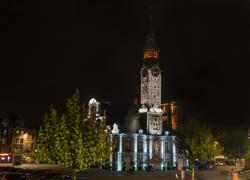
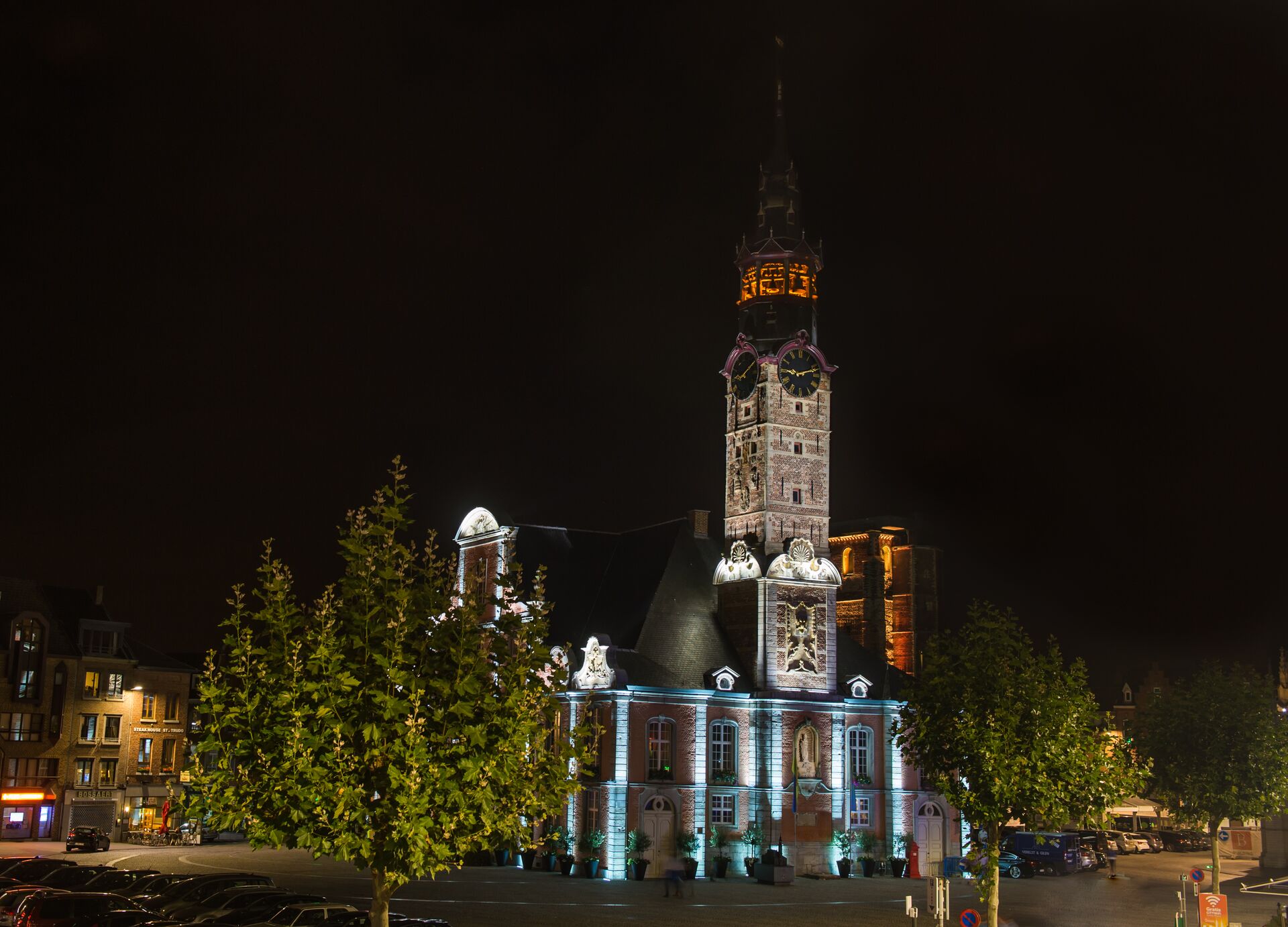
Our tour of discovery starts in Sint-Truiden. This charming town in the heart of the region bears witness to hundreds of years of history. We're delighted to find out all about it. First we head to the Grote Markt where the striking red City Hall immediately catches the eye. This city hall was built in the early 18th century around the medieval hall and the imposing Belfry. The tower of the belfry houses a restored carillon with 50 bells. This gem has been recognised by UNESCO as a World Heritage Site.
The third stand-out building in this square is the Church of Our Lady, a Gothic church with an adjacent treasury. We step inside to a surprising interior. We see murals, amazing furniture and fittings, and two historic organs. And we haven't even seen the treasury yet. Here we find a wealth of ecclesiastical vessels, reliquaries and holders, chasubles, textiles and curiosities from the Middle Ages on display.
196 steps up the 1,000-year-old Abbey tower
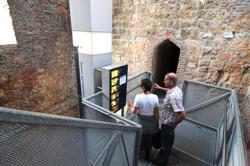
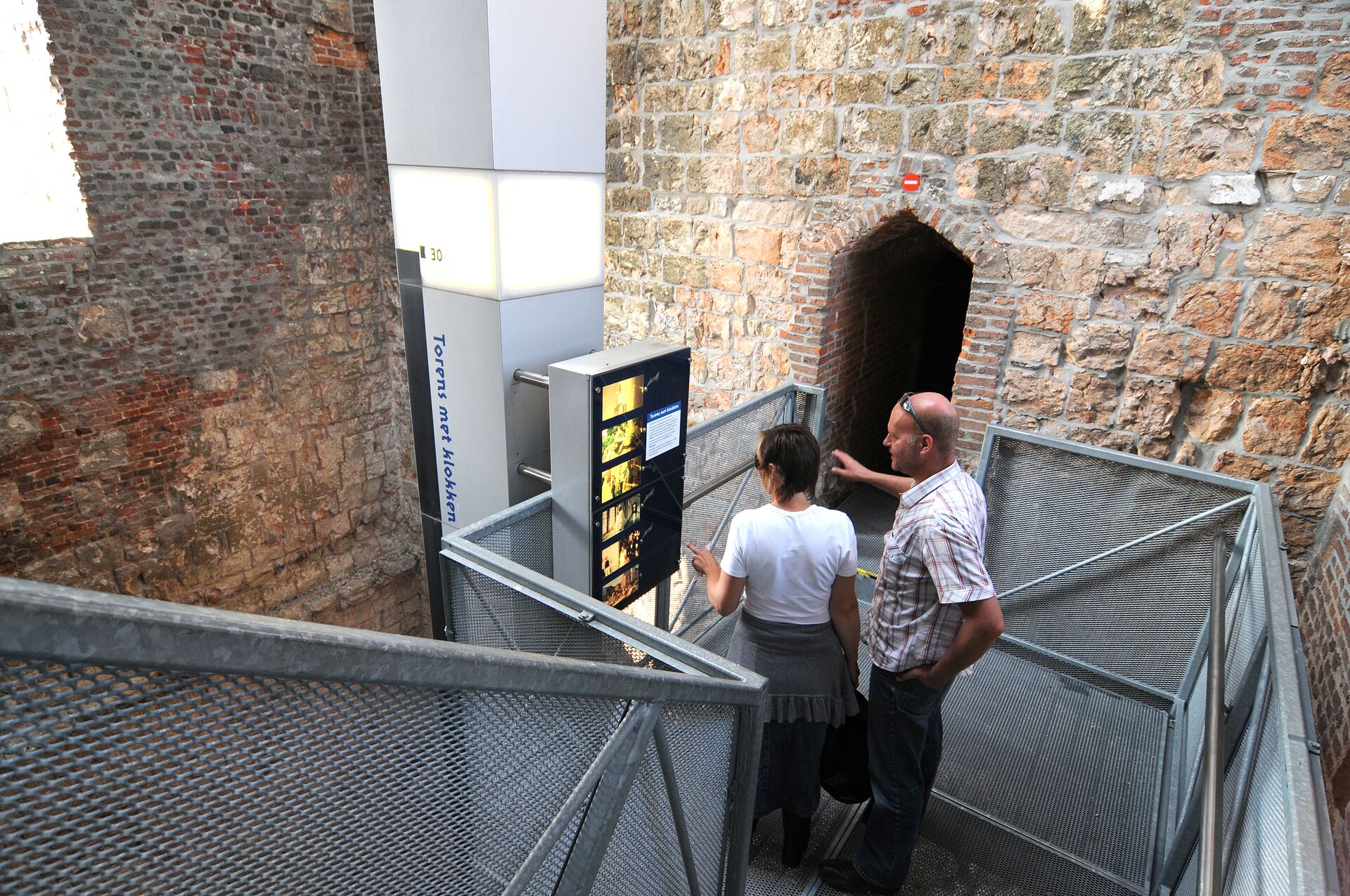
We continue with this historical vibe for a while. We head on to Sint-Truiden Abbey, the seed from which this city sprung. Around the year 650, a nobleman called Trudo founded a small abbey community here. This would eventually grow into the city we know today. We put on our sturdy shoes and climb the 1000-year-old Abbey tower. After 196 steps, with five rest points and experience platforms along the way, we enjoy a breathtaking panorama of the region. It's well worth it.
Cycling through the fruit region
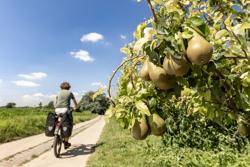
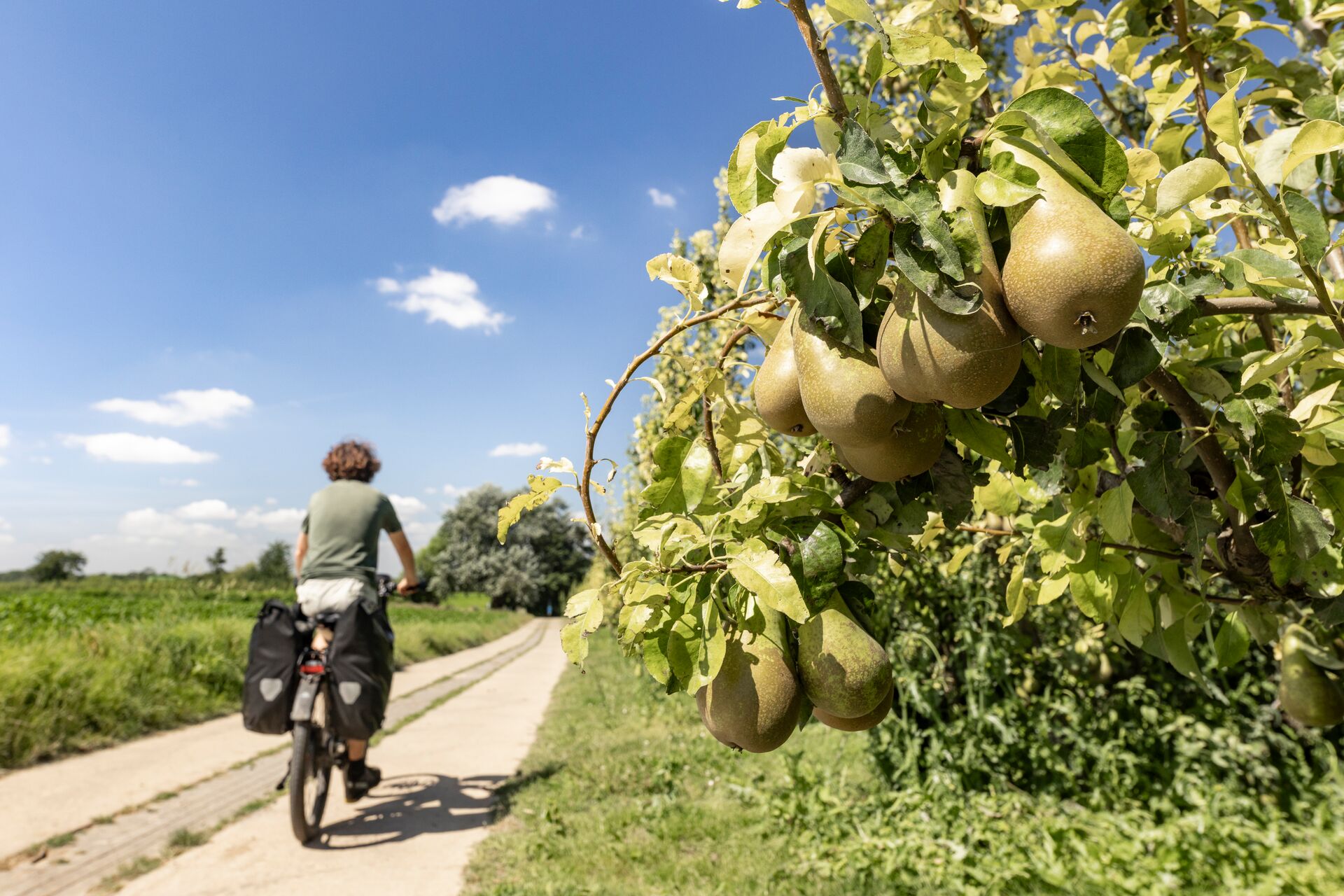
We're about to take a deep dive into those vistas we've just seen. This fruit-growing region with its rolling landscape, fruit orchards and vineyards is a Mecca for cyclists. So we take out another rented e-bike. We pick them up at the station in Sint-Truiden. From here, we'll hit the road, passing through Fruity landscapes with spirit.
We decide to head out of Sint-Truiden. Before we realise it, we find ourselves in a fantastic landscape bursting with fruit trees. We meander through the greenery, heading for the first highlight: the Syrup factory. This experience centre does full justice to Haspengouw's fruit-growing history.
'Reading between the lines'
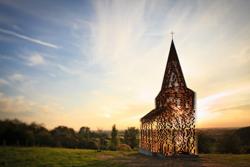
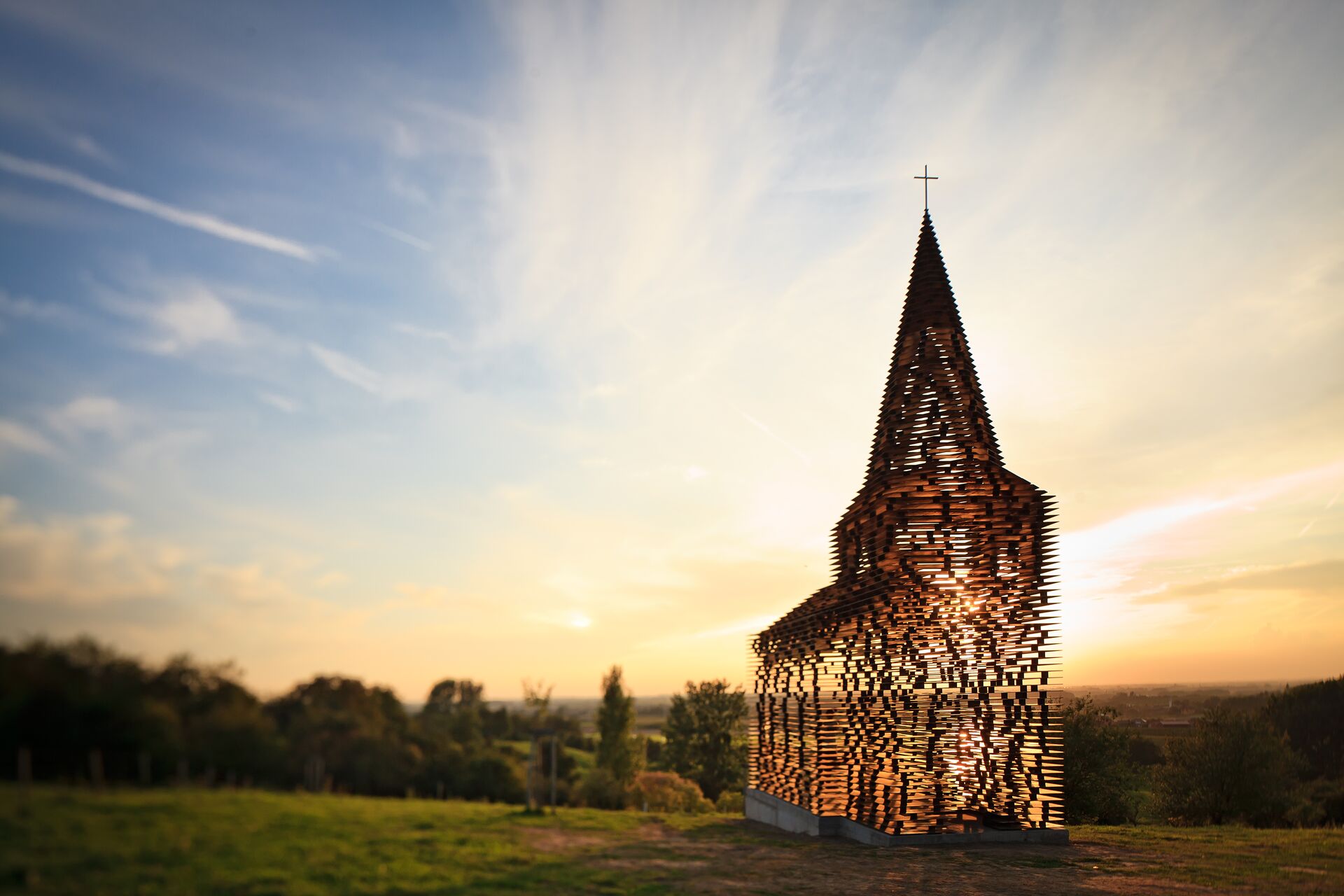
After this educational visit, we ride on. Through the centre of the town of Borgloon, we head to our first artistic highlight: Reading Between the Lines. This so-called 'see-through church' is made of 100 stacked steel plates. Together these create a very unique church, on top of a hill in the open fields. Thanks to its special construction, the landscape is always visible. Both from a distance and up close. That means that the little church is always both present and absent from the landscape.
While we're still letting this impressive sight sink in, we continue on our journey. Along a winding road between fields and village centres, we pass another stop for our taste buds. Kitsberg is one of the many wine estates in this region. An ideal place to sample the best wine Haspengouw has to offer.
A floating chapel over Haspengouw
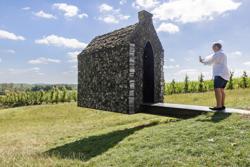
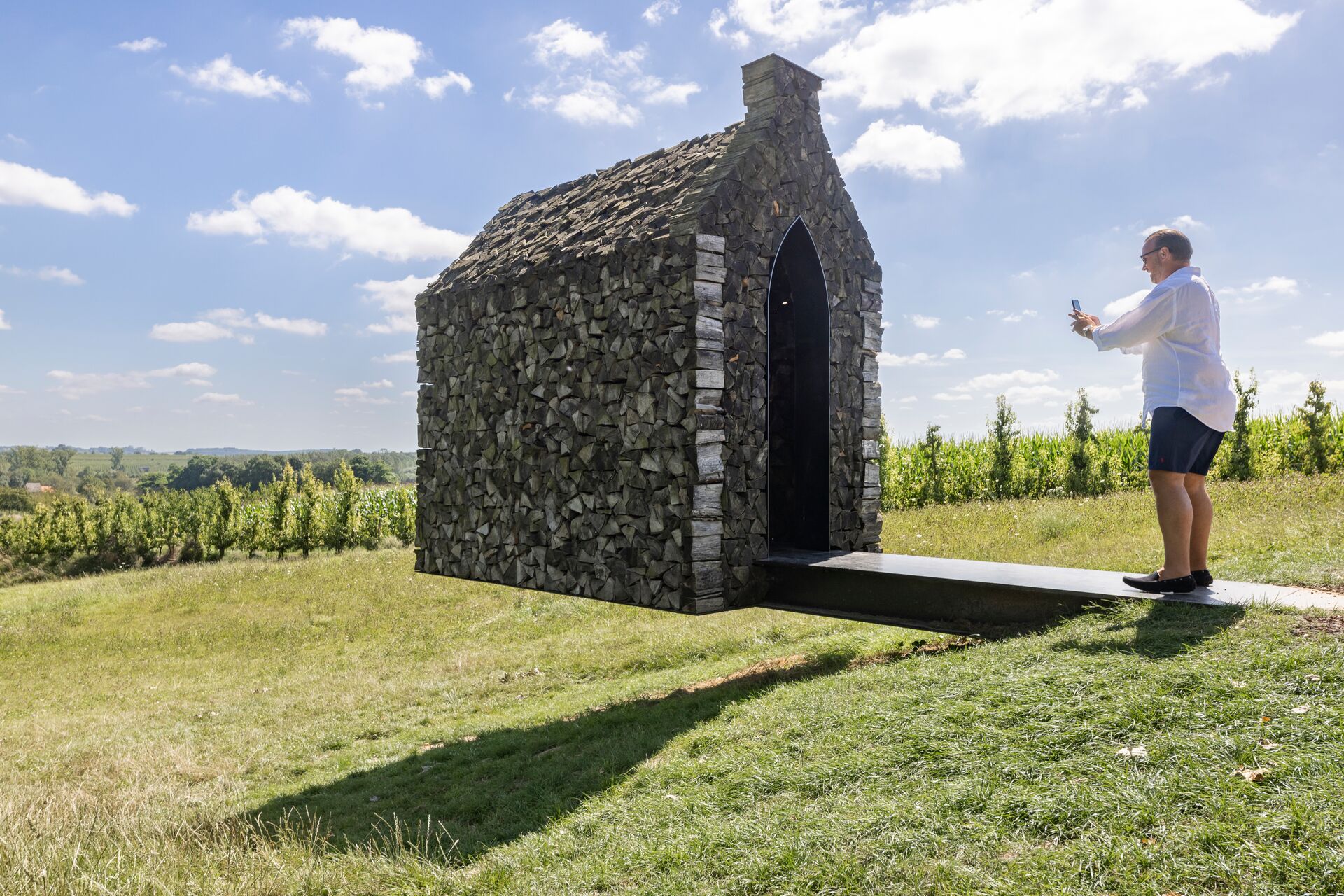
Right after that, the road leads (again) to an artistic little church. And no, we're not going round in circles. Helsheaven is a floating chapel built from the trunks of dozens of cherry trees. It floats above Haspengouw, as it were. The combination of this sculpture and the landscape gives us wings.
Our wings take us back to Sint-Truiden. As we wind through the beautiful countryside, we reach the end of our day, and our three days in this superb, hospitable province. We hand our rental bikes back at the train station, and from there head back into town. We find a nice terrace, order a fantastic Belgian beer and make one last toast, to Limburg.
Our three days through Limburg took us to various wonderful places in the open countryside. We explored parts of the Hoge Kempen National Park, De Wijers and the rolling landscapes of Haspengouw and Limburg's natural splendour doesn't end there. Interested in experiencing it for yourself? Superb nature areas including National Park Bosland, Meuse Valley River Park and the undiscovered parts of Hoge Kempen National Park are waiting for you with open arms.
Overview of useful links for this itinerary
Ready to go!
